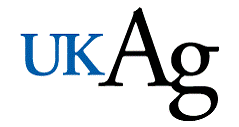
 |
Burley Curing Advisory |
The on-line Burley Curing Advisory has been developed to provide burley producers and related personnel with timely guidance on curing management procedures. The Advisory uses real-time data from the KyMesonet System and UKAgwx/NOAA PointAgCast to provide the timely guidance on-line for speedy access by smart phones, and computers. The KyMesonet system has weather stations in nearly 63 Kentucky's counties, thus giving much local data for the Advisory that was not available for such a timely Advisory just a few years ago.
The electronic Burley Curing Advisory is based on numerous scientific curing
studies over the past 70 years and the many years of experience and recent
development work by Emeriti faculty Drs George Duncan and Linus Walton of the UK .
College of Agriculture , Biosystems and Agricultural Engineering Dept., combined
with the expertise and facilities of Mr. Tom Priddy and Dr. Wanhong Wang of the
Ag Weather Center to create the on-line Burley Curing Advisory...[More]
Simply select County/Station and then press the "Submit Choice" button.
